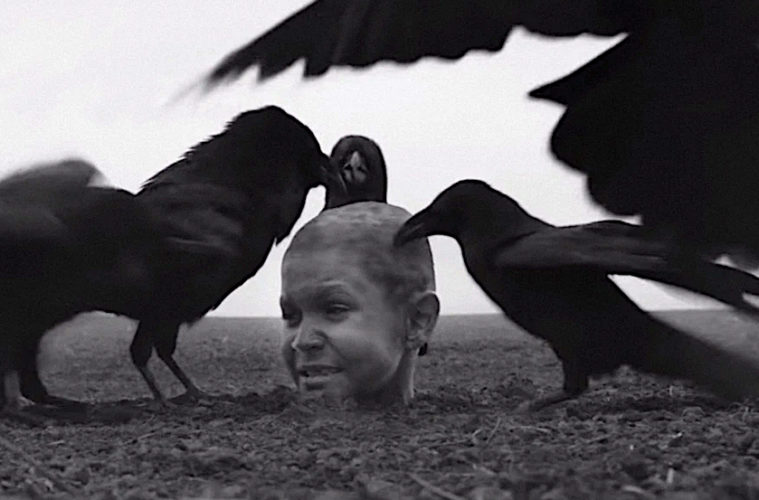Sometimes you can tell a movie is going to be great from its first frame. First comes the image, then the satisfaction of knowing you are in good hands. The Painted Bird is one of those films, even if some of its shocking imagery might not be for everyone.
The movie opens with a gripping, black-and-white tracking shot of a boy running through a forest. Initially, we don’t know who or what he’s running from. But it doesn’t take long for a group of teenagers to pin him down, burn his pet Ferret, then beat him to a pulp. It’s a brutal opening scene, though hardly the worst thing that happens to the protagonist over the three hour run-time.
Based on Jerzy Kosinski’s World War II novel (of the same name), this is a nightmarish descent into occupied Europe that will infuriate some viewers while inspiring spiritual catharsis in others. When it was first shown at the Venice Film Festival this Fall, there were mass walkouts over the Holocaust imagery. And who can blame them? Director Vaclev Marhoul drops us into a hellscape reminiscent of Elem Klimov’s Come and See and Andrei Tarkovksy’s Ivan’s Childhood, where rape, incest, murder, torture and racism are seen through the eyes of an orphaned child.
Told in five chapters–“Marta,” “Olga,” “Lekh and Ludmila,” “Hans”– the film is an odyssey of tragedy, each more graphic than the last. After the nameless boy (Petr Kotlar) is beaten by anti-Semitic teens, he returns home to find his aunt dead and the house ablaze, forcing him to wander a landscape composed of leafless trees, inky shadows and long, wintry silences. Eventually he is stopped by villagers who curse him as a demon. A witch doctor buys him and takes him for a slave.
But things get worse–much, much worse. A bird-catcher seems nice enough…until he isn’t. A miller (Udo Kier) beats his wife with a leather belt. The boy is taken in by a priest (Harvey Keitel) who sells him to a child molester (Julian Sands). It’s telling that a Nazi soldier (Stellan Skarsgard) is the nicest person here. The film’s title refers to a scene where the bird catcher releases a bird–whose wings he has painted– only to watch, with a sadistic smile, as a flock devours it, unable to recognize it as a fellow bird.
Something involving a cat and eyeballs happens soon after, and while it’s nearly unwatchable, most who stick with it probably won’t regret it in an artistic sense. This is only the third feature from Marhoul, and it’s a stomach turner. But it’s also a reminder of art-house cinema’s ability to transport us to murky and mysterious worlds. Some of Murhou’s images are unforgettable: snowflakes melting on a stream, a dark, empty field suddenly lit up by flares, German snipers perched high up in canopies. The images are paired with Helena Rovda’s costumes and impressive location scouting. Where they find all these huts, shacks, and rivers is anyone’s guess.
And yet, for all its visual qualities, Marhoul can’t achieve what Klimov and Tarkovsky were able to pull off. The compositions are arresting, confrontational and always beautiful, a reflection of what it would have been like to wander war-torn Europe in 1944. But The Painted Bird is less a sensory experience than a painterly one; each 35mm shot is great to look at, but beyond the visuals, the film fails to put us in the muddy shoes of the boy at its center.
The boy isn’t given enough to do. He’s simply passed from one abusive owner to the next like the donkey in Au Hasard Balthazar, bearing witness to a world gone to shit. The difficulty of the boy’s journey, observing and living a life that might have been easier had WWII not happened, creates a pungently depressing statement about war in general: both soldiers and civilians are left with battle scars.
Advertising disclosure: We may receive compensation for some of the links in our stories. Thank you for supporting LA Weekly and our advertisers.

